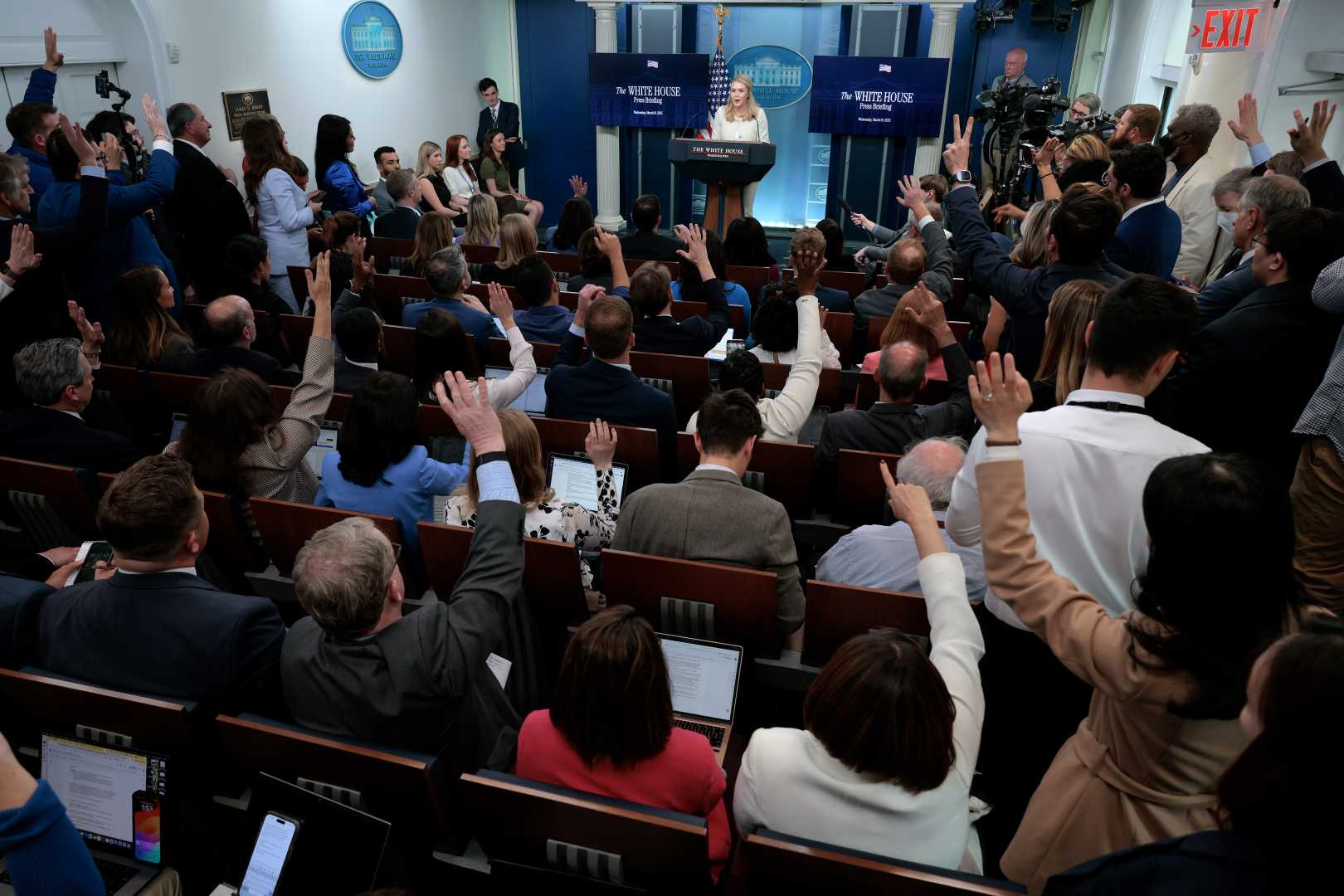Politics
White House Press Briefing Room Faces New Media Control

WASHINGTON, D.C. — The White House is increasingly taking control of its press briefing room, a trend noted during recent briefings led by Press Secretary Karoline Leavitt. Since President Trump‘s second term began, Leavitt has held news briefings regularly, taking questions from reporters on various topics.
Each briefing typically features about 15 to 20 questions, with a significant portion coming from reporters seated in the front rows. The layout of the James S. Brady Press Briefing Room plays a crucial role, as 49 permanent seats are often allocated to major news outlets like CNN, Reuters, and Fox News.
Leavitt has noted that about a quarter of the reporters she calls on are standing along the perimeter of the room, where outlets such as The Daily Wire and Turning Point USA are represented. This change aims to reflect a wider variety of media currently shaping public discourse.
This January, the White House introduced a “new media” seat meant for individuals from nontraditional media outlets. During briefings, Leavitt often starts with questions from this seat. Some journalists and critics express concern that this shift in focus may undermine the role of traditional news outlets in holding the administration accountable.
Recent adjustments to the seating chart could further diminish the presence of legacy media organizations, and long-time White House reporters argue that these measures limit their independence and ability to relay accurate information to the public. The increased prominence of partisan media personalities has altered the dynamics of questioning during briefings, often bending towards less critical inquiries.
In March, the White House announced plans to take control of the reporters’ seating arrangements, raising questions about which outlets will be given priority. For decades, the White House Correspondents Association has regulated seating to maintain fairness; however, the increased selectivity may lead to greater favoritism toward pro-Trump outlets.
The ongoing legal battles with the Associated Press highlight the stakes involved in press access and governmental control over news coverage. The AP has challenged the new policies, claiming violations of their First Amendment rights following restrictions on their reporters at key presidential events.
“The government should not be able to control the independent media that covers it,” said Eugene Daniels, president of the White House Correspondents Association, reflecting widespread concern about the evolving media landscape around the presidency.
As this situation develops, it remains uncertain how these shifts will affect the public’s access to information and the administration’s accountability to the media.












